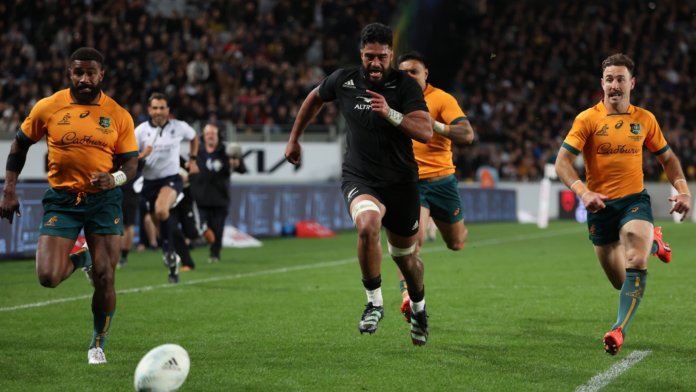
The Rugby Union World Cup gets under way on September 8, with hosts France facing the mighty New Zealand in a mouthwatering opener in Paris.
The 20-team tournament is the biggest standalone global team sport competition outside of the FIFA World Cup.
Events of that scale draw in casual and new fans in their droves, but what’s going on with scrums, lineouts, rucks and mauls?
Fear not – The Sporting News is here to walk you through the basics of rugby union so you can sit back and enjoy the action.
MORE: How to watch Rugby World Cup 2023 in the UK: Live stream, TV channels
How do you score points in rugby?
There are two methods of scoring points in rugby union: tries and goal-kicking.
Tries are the most effective way of racking up a big score, with five points awarded when a team touches the ball down behind the opposition try line.
After a try, the scoring team will get the chance to add two points via a conversion. This is an attempt to kick the ball through the posts from the floor. The position of the kick is determined by where the player scoring the try managed to touch down.
As such, you’ll often see players trying to score as close as possible to underneath the posts to give their goal-kicker an easier task of securing the additional two points.
Each team’s goal-kicker has an important role in ticking the scoreboard over outside of tries via penalties, when an infringement by the opposition can allow a place kick at the posts from where the offence took place.
Penalties are worth three points, the same as drop goals, which are kicks on the half-volley through the posts during an open phase of play. Given how teams are structured, the fly-half will typically be the player put into a drop goal position, although — like tries — any player is allowed to score a drop goal.
Each team’s goal-kicker will typically be their fly-half, given their expected aptitude due to kicking demands in open play for players in that position. Full-backs are the next most common goal-kicker, while others playing in the backs sometimes take on the responsibility.
Oh, hang on, we’ve started talking about positions…
MORE: England squad for Rugby World Cup 2023: Full list of players selected by Steve Borthwick
What is the difference between forwards and backs in rugby union?
Rugby union teams of 15 are split into eight forwards and seven backs, numbered 1-15 with each number corresponding to a position.
Backs
15. Fullback
14. Right wing
13. Outside centre
12. Inside centre
11. Left wing
10. Fly-half
9. Scrum-half
Forwards
1.Loosehead prop
2. Hooker
3. Tighthead prop
4. Lock
5. Lock
6. Blindside flanker
7. Openside flanker
8. Number eight
The forwards’ main job is to win possession of the ball and establish control of the game. The backs are then responsible for making use of the possession and territory the forwards secure, meaning they enjoy a greater proportion of scoring opportunities.
This split is similar to offence and defense in American football, although the forwards and backs remain on the pitch simultaneously throughout the game.
If there’s an equivalent to
…. to be continued
Read full article at the Original Source
Copyright for syndicated content belongs to the linked Source : Sporting News – https://www.sportingnews.com/us/rugby-union/news/rugby-union-rules-scoring-positions-scrums-penalties/a445922f87513de3a4aae26b

